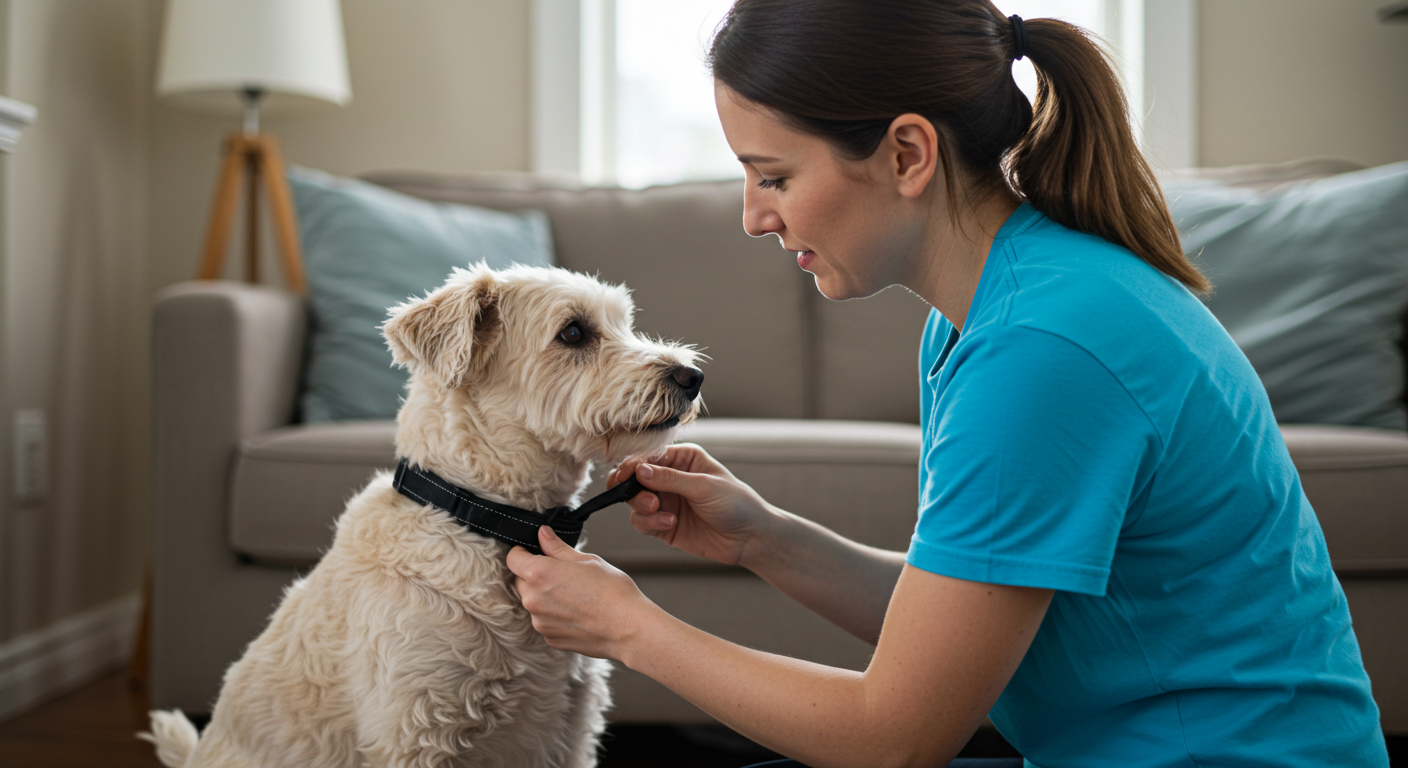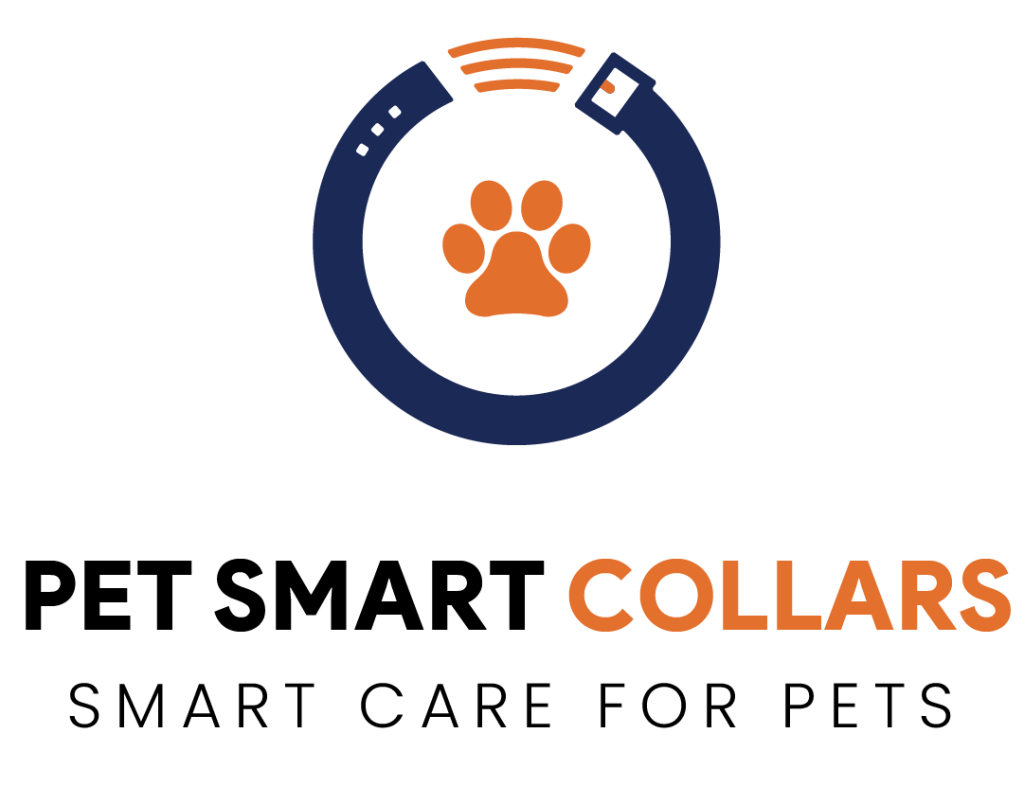Training a dog can be rewarding and challenging, especially when dealing with pulling on walks, excessive barking, or poor recall. For many pet owners, the right tools can make a big difference in supporting consistent training. One topic that often sparks debate is the use of training collars. While some worry about harsh methods, modern collars now include safe, adjustable, and humane options designed to guide behavior rather than punish. The key is responsible use and choosing the type of collar that suits your dog’s needs. In this guide, we’ll review the best dog training collar options available in 2025, from advanced technology to gentle alternatives for sensitive pups. Our goal is to help you compare top choices, understand their features, and select a collar that promotes effective training while keeping your dog’s comfort and well-being a priority.
Why Training Collars Matter
Training collars can make a big difference in improving safety, obedience, and communication between you and your dog. When used responsibly, they provide gentle guidance that helps reduce common issues like pulling, excessive barking, or ignoring recall commands. By reinforcing cues clearly, collars create a safer and less stressful experience for both pet and owner, especially during walks or off-leash activities.
There are several types of collars that are made for different purposes. E-collars or remote training collars will help you redirect behavior even from a distance and with low, medium, or high signals. Martingale collars are best for dogs that have learned to slip out of a regular collar and provide a gentle correction without choking. Harnesses are also an option if you do not want to use a collar and still want leash control on walks. Light-up collars will keep our four-legged loved ones safe and visible while outdoors at night. However, we also need to remember that training collars are not a magic wand either. There is no point in wearing a collar if you do not have consistency, patience, and create some sort of positive reinforcement in the process. Once the collar has been introduced properly, it can be used as a tool to help you. It will never take the place of proper training and reinforcement.
Top Picks: 8 Best Dog Training Collar
- SportDOG SportHunter 825X – Best Remote Dog Training Collar
- Dogtra 280C Small Dog Training Collar
- Dexil TRAINING Collar
- PetSafe Martingale Collar with Quick Snap Buckle
- Blazin Light-Up Dog Collar
- Garmin SPORT PRO
- Garmin Tri-Tronics PRO 550
- ET-302 Mini Remote Dog Training Collar
1. SportDOG SportHunter 825X – Best Remote Dog Training Collar
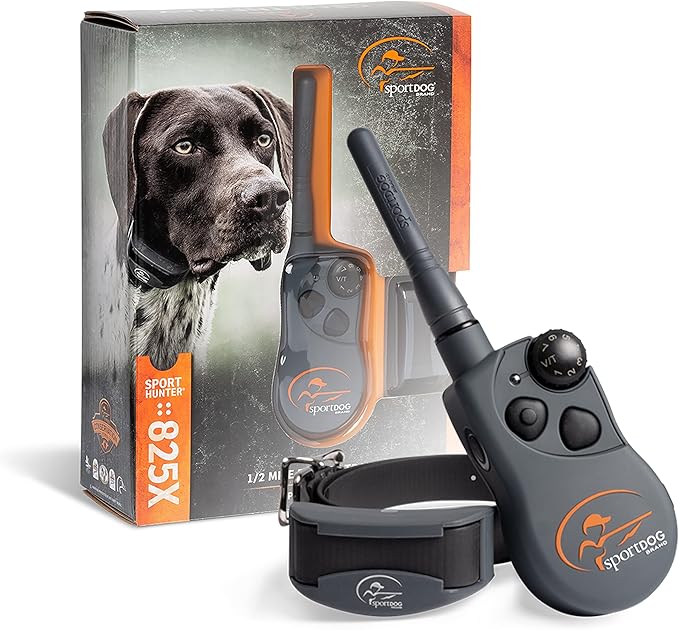
The SportDOG SportHunter 825X is a multifunctional remote training collar that provides dependable control outdoors. It has a range of up to half a mile and can be expanded for training up to three dogs with additional collars. The system offers three modes of correction which include tone, vibration and static stimulation with 21 levels of static for temperamental needs. The remote is designed for simple no-look operation so you can focus on your dog; the collar is waterproof and submersible up to 25 feet, making it powerful for hunting, field work and training in wet conditions.
The SportHunter 825X training collar is ideal for active dogs and owners who need a variety of flexibility and durability in different settings. If you are working on recall, suppressing concerning behaviors, or managing several dogs, the SportHunter 825X is well-balanced concerning range, reliability, and ruggedness to use confidently.
Pros
- Long range of up to half a mile for remote training
- Three training modes with 21 adjustable levels
- Expandable system for multiple dogs
- Waterproof and submersible up to 25 feet
Cons
- Static stimulation may be too strong for sensitive dogs
- Range is shorter compared to some premium models
- More expensive than basic training collars
- Requires proper fitting and adjustment for effective use
2. Dogtra 280C Small Dog Training Collar
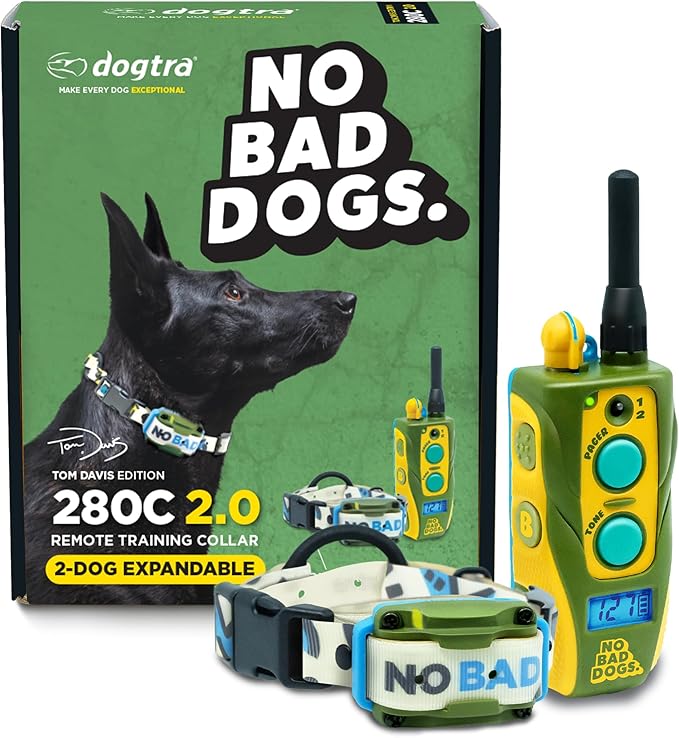
The Dogtra 280C is an incredibly compact, fully waterproof e-collar for smaller breeds weighing 10 pounds or more. With a half mile range and 127 levels of static stimulation and vibration, the Dogtra 280C gives total control during training. Its slim and lightweight features make it among the best dog training collars for small to medium breeds, combining comfort and reliability.
This collar features a rheostat dial for fine adjustments, an LCD display to monitor levels, and durable construction suited for different environments. Whether you are working on recall, leash manners, or correcting unwanted behavior, the 280C is built to support consistent and humane training.
Pros
- 127 stimulation levels for precise adjustment
- Compact and lightweight, ideal for small breeds
- Fully waterproof receiver and transmitter
- Offers both static and vibration modes
Cons
- May feel too strong for very sensitive dogs
- No built-in light or audible tone feature
- Battery life may run short with heavy use
- Less suitable for larger, stronger breeds
3. Dexil Dog Training Collar
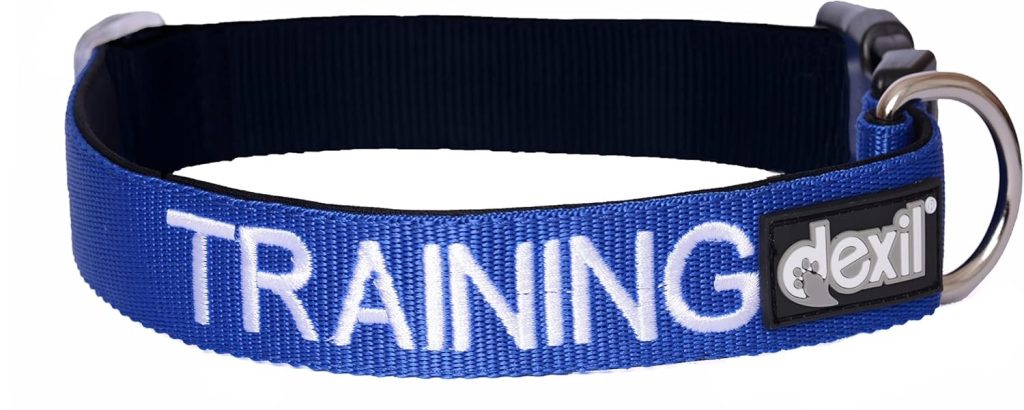
The Dexil Training Collar is a non-electronic, low-tech option that helps owners communicate with their dog using color-coded visual cues instead of shocks or vibrations. It is designed to allow clear signals such as a particular color indicating stop or go without any static stimulation, making it a gentler tool especially useful for sensitive dogs or during behavior awareness training. Because it does not rely on electricity, it is one of the shock collar alternatives that many owners consider for a more human centred approach.
This collar is often used in proximity or awareness training, where the dog learns to associate certain cues or colors with desired behavior. While it is not a high tech remote training collar, it can complement positive reinforcement by offering a consistent, visible message system. That makes it a good choice in situations where you want to avoid traditional stimulation yet still give your dog clear feedback.
Pros
• Gentle and safe, no electricity or stimulation
• Color-coded cues make communication easy
• Lightweight design with simple use
• Works well with positive reinforcement
Cons
• Limited correction for serious behavior problems
• Not effective for dogs that ignore visual cues
• No remote or range control for distance training
• Less flexible than electronic training collars
4. PetSafe Martingale Collar with Quick Snap Buckle
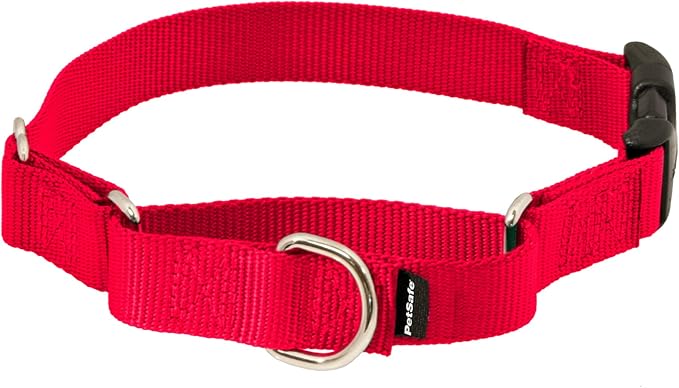
The PetSafe Martingale Collar is a simple, humane, no-shock, no-electronic training device. When the dog pulls, it tightens up on the dog’s neck enough to provide a no-choke humane correction. It is ideal for dogs that often slip out of conventional collars, providing added safety and control. Since it is a non-shock device, it is a preferred shock collar alternative for many dog owners.
The quick-snap buckle is straightforward to put on and take off, and the martingale design not only prevents escapes but also self-adjusts by tightening automatically. The collar is an easy but useful tool for those pet parents looking for a tool to simply take walking or have light corrections.
Pros
• Provides gentle correction without choking
• Prevents slipping or escape in dogs
• Quick-snap buckle for fast use
• No electricity needed
Cons
• Not suitable for serious behavioral problems
• No remote control or stimulation modes
• Less effective for dogs ignoring pressure cues
• Limited functionality compared to electronic collars
5. Blazin Light-Up Dog Training Collar
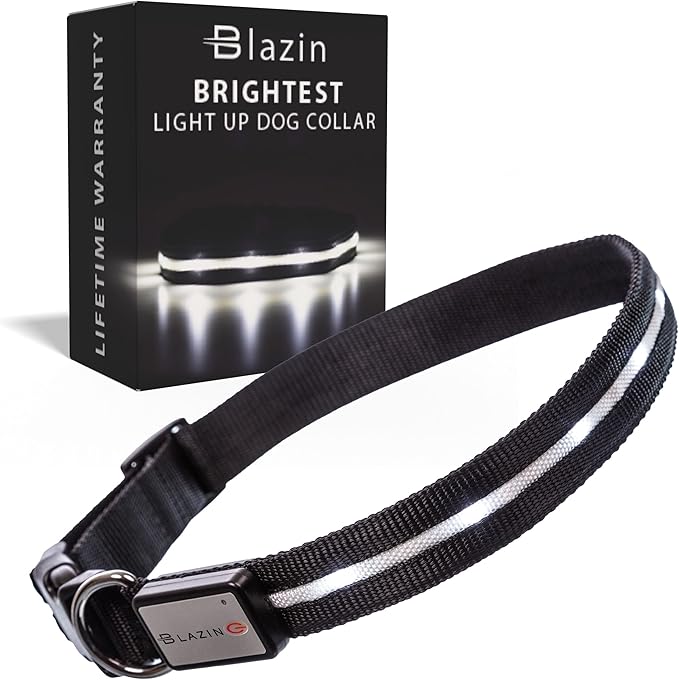
The Blazin Light Up Dog Collar is a safety-oriented alternative that keeps your dog visible during nighttime walks, camping, or while it is low in light. It has bright LED lights that can be seen from a distance, allowing the owner to see their dog and reducing the chance for the dog to get lost or injured. For this reason, it is one of the best dog training collars for dog owners that value safety as much as enforcing obedience.
This collar is USB rechargeable and both light in weight and adjustable. Meaning it can work for many dog breeds and sizes. The light has multiple modes to illuminate depending on the condition, such as a steady glow or flashing mode. Because this is a safety-related collar, it is commonly a part of a dog’s general training setup with harnesses or training collars – especially since it is not correcting behavior. The collar is durable and weather-resistant to allow for walking about in the neighborhood or camping, on trails, or exploring – ensuring reliability.
Pros
• High visibility with bright LED lights for night safety
• USB rechargeable and eco-friendly design
• Adjustable fit for different breeds and sizes
• Lightweight and weather-resistant
Cons
• Not designed for training or correction
• Battery life may require frequent recharging with heavy use
• Less effective in very bright environments
• Works best as a secondary collar for safety rather than obedience
6. Garmin SPORT PRO Dog Training Collar
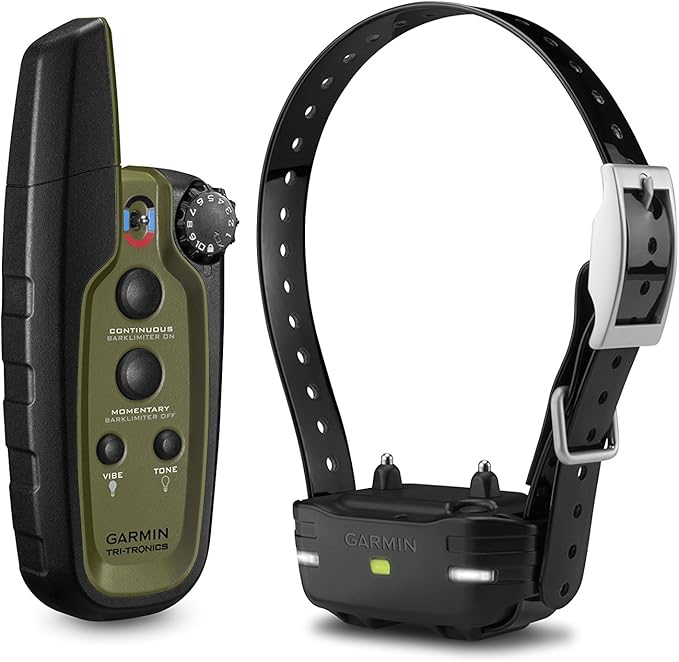
The Garmin SPORT PRO is a professional-grade remote training collar designed for serious trainers or working dogs. It has the ability to train up to three dogs from a single handheld unit and has a control range of up to ¾ mile. The remote has a quick-turn dial and four training buttons to provide momentary or continuous stimulation, as well as vibration and tone modes. The device also incorporates a BarkLimiter that helps control annoying barking automatically. The dog device has LED beacon lights for enhanced visibility in low-light situations. The SPORT PRO is often rated among the best dog training collars for medium to large breed dogs because of its functionality and feature set.
Designed for both field and everyday use, the SPORT PRO is waterproof and rugged. Its ergonomics are designed for one-handed adjustment intuitively, meaning you can adjust the settings without even looking. The stimulation levels are designed to allow for fine-tuning, especially for dogs who need a little more finesse. Many trainers use and recommend this collar for trainers who want a training collar that has both power and precision.
Pros
• Controls up to three dogs with one remote
• 10 levels of momentary or continuous stimulation
• Includes vibration, tone, and BarkLimiter modes
• LED beacon lights improve visibility in low light
Cons
• Some users report delayed response on the lowest levels
• More expensive than basic collars
• Not always ideal for very small or toy-size dogs
• Requires learning to use functions intuitively under real training stress
7. Garmin Tri-Tronics PRO 550 Dog Training Collar
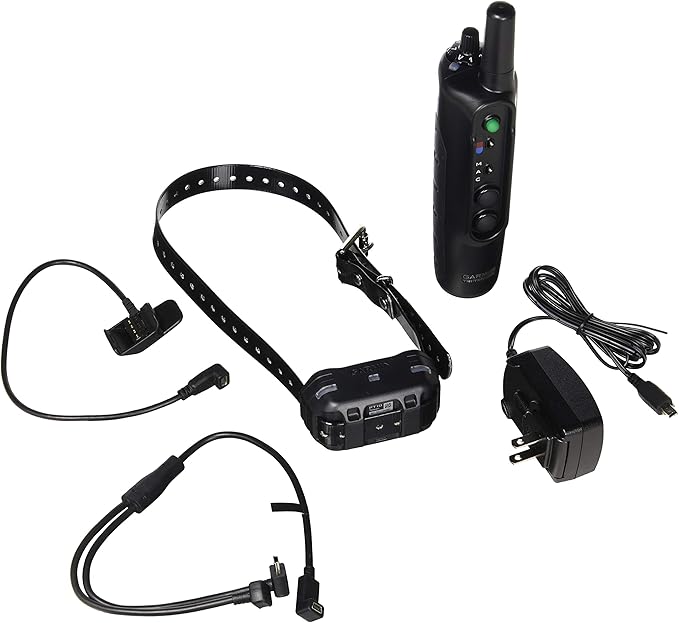
The Garmin Tri Tronics PRO 550 is a premium remote training collar intended for serious trainers and multi dog homes. The PRO 550 allows you to control up to three dogs at once from one transmitter. The PRO 550 has a robust range which is sufficient for field training, hunting, or for use on large properties. It offers several different modes of stimulation including continuous, momentary, vibration and tone among its other features including a BarkLimiter for nuisance barking. Due to its capacity and versatility, it is often one of the best dog training collars for advanced users and multi dog households.
Built to withstand tough environments, the PRO 550 is waterproof and highly durable. The transmitter is designed for easy one-handed use so you can switch modes or intensity levels even during active training sessions. The collar offers fine-tuned control over stimulation levels, enabling incremental adjustments tailored to each dog’s sensitivity. Many trainers rely on it in demanding scenarios where precision, long range, and reliability are essential.
Pros
• Controls up to three dogs from one transmitter
• Includes tone, vibration, continuous and momentary modes
• Long range makes it ideal for field training and large properties
• Waterproof and durable design
Cons
• Higher price compared to entry-level collars
• Learning curve for beginners
• Bulkier transmitter than simpler models
• Too powerful for very small or sensitive dogs
8. ET-302 Mini Remote Dog Training Collar
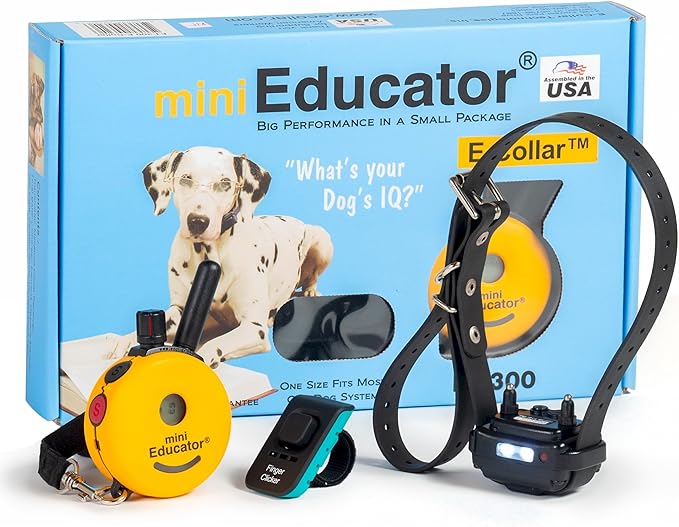
The ET 302 Mini Remote Dog Training Collar is a compact and efficient dual dog system designed for owners managing more than one pet. With a half-mile range and a discreet handheld remote, it provides effective communication through multiple modes, including stimulation, vibration, and tone. Its small receiver size makes it suitable even for smaller breeds, while still offering the reliability needed for medium and large dogs. This combination of flexibility and control makes it one of the best dog training collars for households with multiple pets.
The collar is waterproof, lightweight, and ergonomically designed for both comfort and performance. The transmitter features a unique “lock and set” function that prevents accidental changes in stimulation levels, giving owners more confidence during training. Trainers appreciate its quick response time, adjustable levels, and the ability to handle two dogs at once without compromising consistency.
Pros
• Dual dog system with one compact remote
• Half-mile range with reliable signal strength
• Adjustable stimulation, vibration, and tone modes
• Small, lightweight receiver suitable for different breeds
Cons
• Higher cost than single dog systems
• Requires a learning curve for first-time users
• May be overpowered for very sensitive or toy breeds
• Battery life varies with frequent use
Buying Guide: What to Look For in the Best Dog Training Collar
Choosing the best dog training collar for your pet goes beyond looks. The right collar depends on your dog’s needs, size, and behavior. Here are the most important factors to consider before making a decision.
Purpose
Different training goals require different collars. If you’re working on recall or off-leash control, an e-collar for dogs with a remote range may be most effective. For leash training, a Martingale training collar provides gentle correction without harming your dog. If barking is the main issue, look for collars designed specifically for bark control. For nighttime walks, a light-up or reflective collar adds safety and visibility.
Dog Size & Breed
Always match the collar to your dog’s size and strength. A small dog training collar should be lightweight and gentle, while larger breeds may need sturdier options with stronger hardware. Breed tendencies also matter. Escape-prone dogs may benefit from a martingale design, while high-energy breeds often do better with remote training collars.
Features
Modern collars offer a range of features. Look for waterproofing if your dog loves swimming, adjustable stimulation levels for flexibility, and reflective material for safety in low-light conditions. A reliable remote range is also key if you’re considering off-leash training.
Comfort & Fit
The best collar for training dogs should be comfortable enough for daily wear. Padding, breathable materials, and adjustable straps prevent irritation and ensure a secure fit. A poorly fitted collar can cause discomfort and reduce training effectiveness.
Budget & Durability
Training collars come in different price ranges, from affordable basics to advanced models. While it’s important to stay within budget, durability matters, especially if your dog is active or strong. Investing in a quality collar ensures long-term use and better training results.
FAQs
Q1. Are training collars safe for dogs?
Yes, training collars are safe when used responsibly and chosen according to your dog’s size and temperament. Modern options such as remote training collars and martingale training collars are designed to guide behavior gently rather than cause harm. It is important to pair their use with positive reinforcement for the best results.
Q2. What’s the difference between shock collars and vibration collars?
Shock collars deliver a static correction, while vibration collars use gentle pulses to get a dog’s attention. Many pet owners today prefer shock collar alternatives like vibration or tone-based collars since they provide effective training cues without discomfort.
Q3. What’s the best dog training collar for small dogs?
The best dog training collar for small dogs should be lightweight, comfortable, and adjustable. A small dog training collar with vibration or tone settings is often more suitable than one with strong static corrections. Martingale collars are also a safe choice for breeds that tend to slip out of regular collars.
Q4. Can I leave a training collar on all day?
No, training collars should not be left on all day. Extended wear can cause skin irritation or discomfort. It is best to use the collar only during training sessions or supervised activities, and always check the fit regularly to ensure your dog’s comfort and safety.
Final Thoughts
The best dog training collar depends on your dog’s size, temperament, and the training goals you want to achieve. A collar should be seen as a supportive tool, not a quick fix, and it works best when combined with patience, consistency, and positive reinforcement. Using it responsibly means keeping sessions short, monitoring your dog’s comfort, and making adjustments when needed to ensure humane training. The goal is not only better behavior but also a stronger bond built on trust and understanding. When chosen carefully and applied with care, a training collar can help guide your dog toward lasting good habits while keeping their well-being as the top priority.


